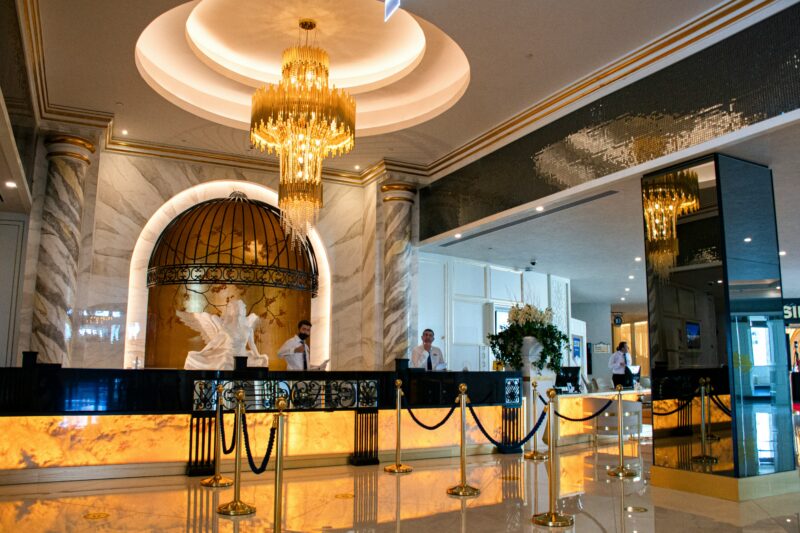
Seasonal surges are a fact of life for hospitality industry professionals. Increased bookings bring higher revenues, but they also trigger heavier call volumes for customer service departments. The result is predictable: agents become overloaded, stress levels rise and burnout follows. When that happens, customer experience and, by extension, the brand’s reputation can suffer.
Hospitality executives face a clear challenge of sustaining quality customer service while protecting the well-being of the people delivering it. The most effective path forward combines strong leadership with technology designed to reduce stress and make frontline work more productive and more satisfying.
The first necessary step
Static schedules and manual adjustments can’t keep pace with fluctuating demand in hospitality customer service centers. But real-time automation can change the equation by enabling managers to adapt to unpredictability on the fly. If call volume spikes, for example, the system can automatically alert employees who may be offline handling other tasks to return to helping customers. And if activity drops, it can seize the opportunity to automatically offer short breaks, coaching sessions or micro-training—preventing downtime from becoming wasted time while at the same time contributing to employee growth and well-being.
This ability to constantly adjust prevents customer service agents from swinging between being overburdened and being disengaged. It can also reduce stress by offloading repetitive, low-value tasks and freeing agents to concentrate on customers’ issues with empathy and flexibility.
For leaders, the payoff is twofold: improved customer service during peak demand and a more sustainable workload for employees. And the benefits extend beyond daily operations. When real-time automation helps level out the volatility that’s inherent in customer service delivery, agents see that the system works for them rather than against them. That transparency fosters trust in leadership and reinforces loyalty during stressful times.
AI-Powered insights to prevent burnout
New AI capabilities are extending the value of real-time automation. Solutions such as applying machine learning to customer service performance metrics to flag early signs of employee burnout can alert supervisors when thresholds are crossed, allowing them to intervene with tailored support before burnout leads to attrition.
Interventions don’t need to be dramatic. Sometimes, a short break or a queue reassignment is enough. In other cases, a manager’s timely check-in can make the difference between an employee staying engaged or mentally checking out. By acting early, leaders preserve both the employee’s well-being and the customer experience.
It’s critical to emphasize that this use of AI is not about surveillance. Done right, it signals care and commitment: “We recognize the demands of your role, and we’re investing in tools to help you succeed.” That message alone strengthens loyalty and morale in a high-turnover industry.
These and other evolving technologies make it possible to prevent stress from compounding, which in turn preserves the quality of employee-customer interactions. These are the touch points that define your brand.
Balancing efficiency with empathy
Technology supplies the tools, but leadership determines how effectively they’re used. Senior executives should set the expectation that agent well-being is not optional—it’s central to business performance. That means ensuring KPIs are designed with human limits in mind, not just customer demands.
It also requires investing in systems that empower managers in real time. The right tools allow leaders to see where support is needed, act quickly to redistribute work and maintain a culture where employees feel valued and protected. When leaders deploy technology with empathy, they enable agents to stay calm, composed and focused on the customer—even under seasonal pressure.
Leadership also involves communication. Agents need to understand why automation and AI tools are being deployed, how the data is used and how it benefits them. Transparency builds trust and prevents resistance to change. When employees see firsthand that these systems give them breathing room and reduce stress, adoption accelerates naturally.
Finally, executives should remember that technology can only go so far. Recognition, professional development and supportive policies—like flexible scheduling or mental health resources—remain critical. Real-time automation and AI can reduce the strain associated with rapidly shifting demand, but it’s the broader culture of empathy and respect that convinces employees to give their best effort when it matters most.
Hospitality is connection
The hospitality business is all about human connection. Seasonal surges will always test the resilience of customer service center teams, but burnout doesn’t need to be a cost of doing business. Real-time automation can provide the agility needed to adapt workloads instantly. AI-driven insights can allow leaders to prevent burnout before it takes root. And people-first leadership can ensure that these tools are applied in ways that respect and empower employees.
Hospitality executives who adopt this approach can safeguard the well-being of their employees while protecting the customer experiences that define their brand. In an industry built on trust and care, investing in employee well-being—as well as adaptable technologies—is the surest path to customer loyalty and business success.
Story contributed by Jennifer Lee, president and co-CEO of Intradiem, a platform that helps large, structured workforces optimize employee time and reduce operating costs.







